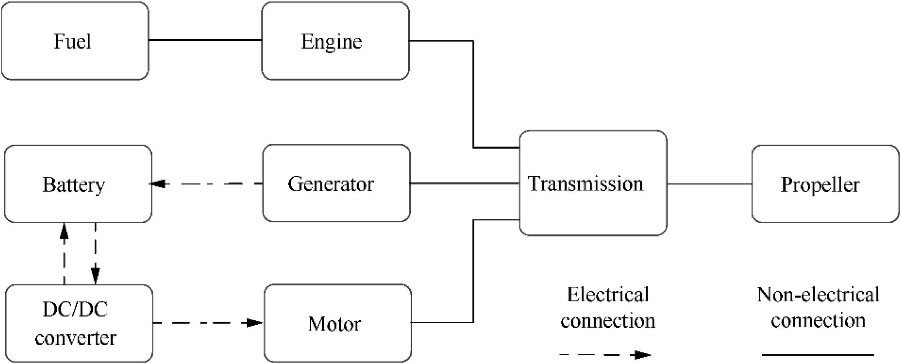The airline industry has seen many shifts over the past 30 years, such as a rise in the market, share of low cost carriers (LCCs), an exponential increase in passengers and longer-distance flights, etc. As a new wave of technological transition has spread out, the next 30 years are expected to be more unpredictable. The Aerospace industry faces the challenge of designing an aircraft that meets performance and efficiency aspects. The global aviation sector accounts for just 2% of greenhouse gas emissions concerning environmental impacts. Nevertheless, there is a growing environmental concern. The first factor for this has been the growing number of aircraft taking to the skies propelled by fossil fuel. So, to overcome these problems, the aerospace companies are developing alternative power sources for the aircraft – Electric, Hybrid, and Electric Hydrogen propulsion aircraft.
As per Markets and Markets research report, the worldwide aircraft electrification market is predicted to succeed in USD 3.4 billion in 2022 and is predicted to succeed in USD 8.6 billion by 2030, at a cumulative rate of 12.2% from 2022 to 2030. Extensive emission of carbon and increasing aircraft noise are major factors affecting this market in upcoming years.
What is a hybrid electric aircraft?
An aircraft with a partially or fully electrified primary power system is a hybrid electric aircraft. The primary energy produced by the jet engines is what propels the aircraft.
How is power produced in hybrid electric aircraft?
Gas turbines produce electrical power on-board the aircraft, which is carried out through an electric drive sub-system impact distribution system. These are incorporated into distributed sub-systems of propulsion, which propel the aircraft.
Hybrid Electric Propulsion
In a hybrid-electric propulsion system, two or more power sources with different configurations are combined to enhance the performance of the entire system. The most used configuration for fuel and battery-powered aircraft are Series, Parallel, and Series-Parallel architecture
1. Series Architecture
In this type of configuration, the propeller is driven by a electric motor. Here the power generated by the engine after combustion of fossil fuel is converted into electrical power via a generator. This electric power can be used to power the motor directly or can be stored in a battery.

2. Parallel Architecture
In this type of configuration, the internal combustion engine and Electric motor both are connected mechanically to the propeller, so they can contribute to the propulsion simultaneously or individually.

3. Series – Parallel Configuration
This configuration is a mixture of Series and Parallel Architecture. The series-Parallel configuration is the most advanced configuration of the hybrid-electric aircraft.

The Global market for Electric and Hybrid Aircraft has also been segmented by type, Type of battery, lift technology, type of propulsion, type of maximum take-off weight, range, mode of operation, and use.
Market Segmentation
- Type: Air Taxis, Drones for delivery, et al.
- Battery: Lithium-Ion Batteries, Solid-State Batteries, and Hydrogen Fuel Cells
- Lift Technology: Multirotor, Vectored Thrust, Lift Plus Cruise, et al.
- Propulsion: Fully Electric, Hybrid, and Electric Hydrogen
- MTOW (Maximum Take-off weight): <250 kilogram, 250–500 kilogram, 500–1,500 kilogram, and >1,500 kilogram
- Range: 0–200 kilometers and 200–500 kilometers
- Operating Mode: Piloted and Optionally Piloted
- By Usage: Commercial Aviation (Narrow Body Aircraft, Wide Body Aircraft, Regional Aircraft), Military Aviation( Fighter Jets, Multi-mission Aircraft, Unmanned Aerial Aircraft), Business and General Aviation (Light Aircraft, Business Jets, Helicopters, Passengers Aerial Aircraft)
Electric and hybrid-electric aircraft, which uses a mixture of battery and traditional power gives us big advantage over traditional jets and fuel-injected propeller aircraft. These electric and hybrid electric aircrafts are much quieter therefore beneficial for the environment and at the same time they generate a negligible emission of harmful gases.
As these aircrafts are completely computer-controlled and electrically-driven propellers, will make smoother and cozy flights. As we all know that electric motor costs less to work and maintain than fuel-powered aircrafts engines, these aircrafts offer lower operating and maintenance costs for airlines and hence cheaper airfares for passengers.
The earth’s atmospheric condition is changing, so we should find greener alternatives as a power source for the aviation industry to reduce air and noise pollution.
eInfochips is a product engineering company having more than 25 years of experience in Device Engineering, Digital Engineering, and Quality Engineering. With in-depth aerospace domain knowledge and the end-to-end technology capabilities and process (DO-254, DO-178B, DO-178C, DO-160, and ARP-4754) expertise, eInfochips has supported DO-254 FPGA verification and DO-178C software verification for next-generation Communication and Navigation systems. We provide Hardware, Software, System, and Mechanical engineering services for Avionics systems.
Get in touch with our experts to know more about how eInfochips can help the Aerospace Industries.
SOURCES
Image 1: Airbus and RollsRoyce end E-Fan X hybrid-electric aircraft
Image 2: Hybrid distributed propulsion system
Image 3: Hybrid-electric propulsion system
Figure 1: Series configuration
Figure 2: Parallel configuration
Figure 3: Series- parallel configuration












